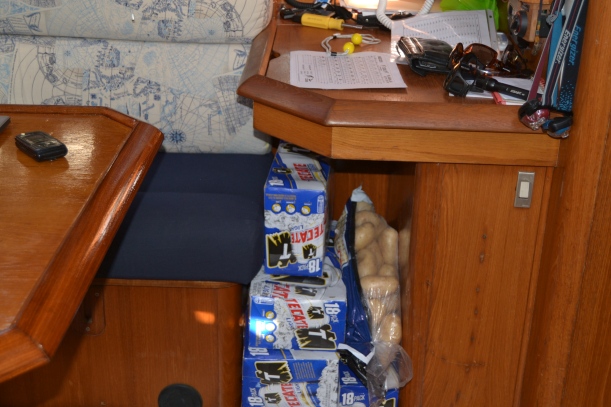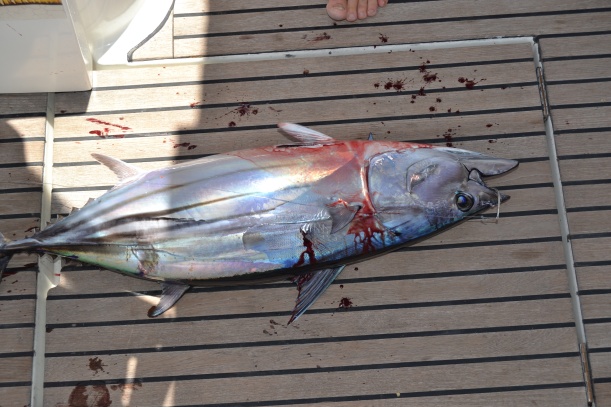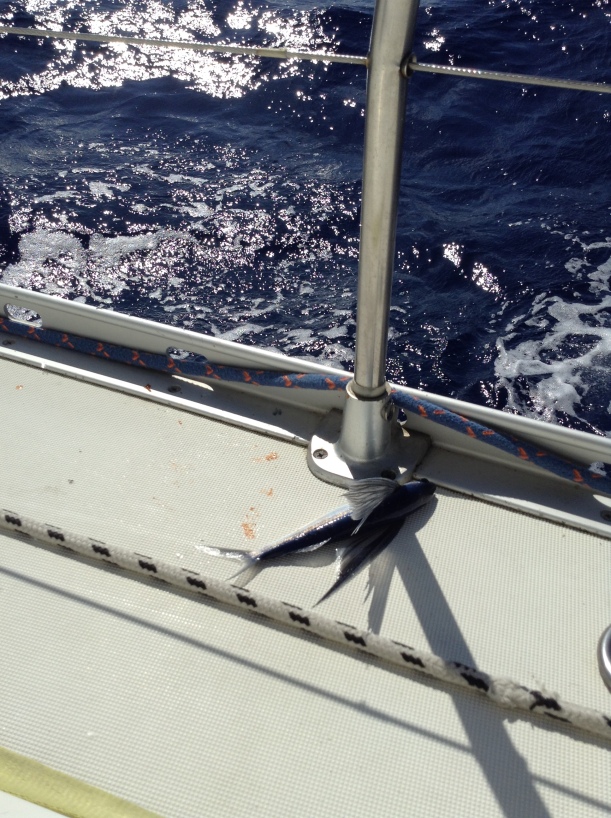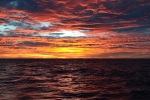The day before we pushed off the dock in Mexico to being our 2900 mile passage to Polynesia, Mike the weather guru proclaimed over the cruisers’ radio net, “The weather window is closed.” He continued, “Guys, if you are even thinking about trying to make the jump, now is definitely not the time.”
In Mike’s opinion, if we left Banderas Bay (where we were) we wouldn’t have enough wind to make the connection to the trade winds at about 10 degrees north of the equator, and we’d just float interminably. Mike had a lot of street cred in both ocean passage making and in weather forecasting, having raced in numerous Pac Cups to Hawaii, and having been the local sailing weather forecaster in Banderas Bay for going on fifteen years. He was also the local sailmaker for North Sails, as well as the go-to rigger for anyone needing work topside. Were we absolutely crazy to make the decision to fly in the face of his advice, and go for it anyway?
It was a hard decision because we were supposed to meet Giulia, my daughter, in French Polynesia in the beginning of April, and we were already ticking down the days to mid-March. Even if we left immediately we would be there one week late, at least. Then there was the problem of the two crew we had on board, Bruce and Robert, both good sailors who signed on to help us make the passage, but who had a finite amount of time they could spend with us. Already we were two weeks delayed on our start, hoping for an optimal weather window to make the jump and get a ‘good connection to the trades’, and we if waited much more they would have to return back to the States and not do the passage. I was also going to have to abandon the passage because I didn’t want to be separated from Giulia longer than the delay was already causing.
We discussed the weather endlessly among the four of us, me, Ed Bruce and Robert. In our assessment, the worst that would happen was that we would float for some days, but we knew the weather was going to change in the medium term and set up the normal seasonal patterns that would bring great wind, and in the meantime we would be making at least some progress instead of sitting at the dock in Banderas Bay. Also, the wind was forecast to be light instead of heavy, which meant no danger to us, and we could take the slow start to learn to work together as a crew. Flying in the face of Mike’s expert advice, we decided to push off and go. But, we loaded up with 13 5-gallon cans of diesel, in addition to the 54 gallons we carry in the tank, to make sure we could motor up to 1000 of the 2900 miles we needed to cover, if necessary. We also set specific waypoints and timelines, so that if we weren’t making those waypoints by set dates we would abandon the effort and turn back.
Our biggest milestone during the passage, one well beyond the point of turning back, was undoubtedly the crossing of the equator. It’s a big event in any sailor’s life, when they officially get to call themselves a Shellback, meaning they have sailed across the equator. Initiation rites are administered by the Shellbacks on board, which in this case was just Ed, and all Pollywogs (non Shellbacks) have to go through them. Our initiation rites were infinitely more civilized than the customs of the British sailors of the last centuries, which involved tar and feathers. Instead we toasted Neptune with chilled champagne, and feasted on seared blue fin tuna (which Ed and Bruce caught the day before), and homemade brownies. Robert even made a guest appearance dressed up as Neptune in a costume that we had devised on board, and we snapped pictures.
In the end all of our planning and hard work paid off! While we had a slow 27 day trip to the Marquesas, the first island group one reaches in French Polynesia, it was a safe and uneventful passage. Originally when we planned the trip I was hoping to make a 22 or 23 day passage, so we probably took about four days longer than normal, but we still were one of the first boats from our fleet to get there. Bruce, Robert, Ed and I had a good week to learn to work together before we started getting into the squalls that cluster around the trades, and we got a good rhythm going. As I told them repeatedly, I couldn’t think of three better guys to make the passage with.
Overall, it was an uneventful passage, with the only major equipment failure being the autopilot, which decided it didn’t want to keep a course anymore after about 10 days into the passage. We needed to recalibrate the autopilot’s compass, but didn’t have the flat water to do that in the middle of the Pacific, so that fix waited until we arrived at our destination. But, in four people we were able to hand-steer, no problem, with shifts of 3 hours on and 9 hours off. We made landfall in Nuku Hiva on April 7th, and were met in the anchorage by Steve, an Aussie from Panniken, on the first Puddle Jump boat to arrive in the Marquesas this year. He swung by in his dingy to welcome us and then disappeared for a few minutes to grab a cold six pack from his fridge to help us celebrate. He was awesome! During the last four days of our passage we had been out of beer for the and Ed was shriveling up like a raisin. The beer was the best beer we ever had, and we were excited to begin our adventures in French Polynesia.

Carla at the top of the mast, helping to troubleshoot a problem with the wind instrument, while we were preparing to leave Mexico.

Before we left La Cruz in Mexico we did a major provisioning to cover us for the month at sea. At the time 6 cases of beer seemed like it would be plenty, but unfortunately, we ran out of beer 4 days short of our destination. We had tons of food though!

Robert dressed up as Neptune to help celebrate the crossing of the equator. We sent the picture to Latitude 38, and hope they publish it…

Ed fought with this tuna for a good 20 minutes before it finally gave up and let him reel it in. It was probably close to 25 lbs, and we made many lovely meals with it.

While not good for eating, flying fish are all over the place in the South Pacific. They scoot above the water for distances of up to 30-40 yards, skipping off the surface like flat stones on lake surface. When we approached, schools of them would take off in confusion, some darting left, others going right, and making us smile.




